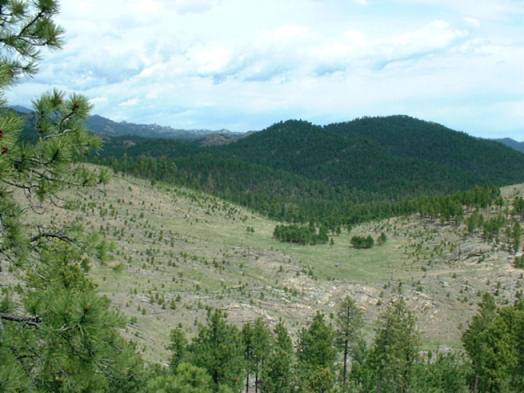
Lakota people secure deal to reclaim sacred site in Black Hills
By Lakota People’s Law Project and Last Real Indians
Last Saturday, at a press conference in Eagle Butte, South Dakota, Lakota leaders of the movement to secure the Lakota pilgrimage site Pe’ Sla for the Sioux Nation announced that the tribes will purchase the 2000 acres of sacred land in the Black Hills. After several weeks of intense fundraising, the nine tribes raised enough to make a deal with the current owners of Pe’ Sla, Leonard and Margaret Reynolds—though details of the arrangement are still being negotiated. The fundraising effort on the part of the Sioux tribes was begun by Attorney Chase Iron Eyes, and the negotiations were carried out in part by Cheyenne River Tribal Councilwoman Robin Lebeau. Both leaders spoke on Saturday. Saturday’s action was organized by Last Real Indians and the Lakota People’s Law Project, two organizations operating in South Dakota that support the return of the Black Hills to the Sioux.
Saturday’s action was organized by Last Real Indians and the Lakota People’s Law Project, two organizations operating in South Dakota that support the return of the Black Hills to the Sioux. The action took place in front of an enormous banner by artist Shepard Fairey and photographer Aaron Huey which read “The Black Hills Are Not For Sale,” a reference to the U.S.’s current policy of ignoring the Treaty of Fort Laramie (1851). The treaty, unilaterally overturned by Congress in 1877, acknowledged Sioux ownership of the Black Hills. The United States has offered the tribes $105 million (plus interest) since 1979 as compensation for the seizure of the land, but the Sioux have refused it and maintain that the land belongs to them.
Shepard Fairey created the red and blue “Hope poster” for Obama’s 2008 presidential campaign, and Aaron Huey is the photographer who co-created last month’s National Geographic cover story about the Pine Ridge Reservation. The banner art was driven from California to South Dakota by the Lakota People’s Law Project, an organization which works to return Lakota children from state-run foster care to their families and tribes.
Speakers at Saturday’s press conference were Chase Iron Eyes, spokesperson for the Pe’ Sla movement; Robin Lebeau, tribal councilwoman from the Cheyenne River Sioux tribe; Madonna Thunder Hawk, activist and tribal liaison for the Lakota People’s Law Project; Phyllis Young, activist and tribal councilwoman for the Standing Rock Sioux tribe; and Joe Brings Plenty, former tribal council chairman for the Cheyenne River Sioux tribe.
Iron Eyes described the process by which his organization, Last Real Indians, conducted a fundraising effort to save Pe’ Sla, raising $300,000. This sum was combined with $1.3 million put forth by the Rosebud Sioux tribe, enough to seal the land deal. Mr. Iron Eyes, an attorney in his mid thirties, discussed the teachings concerning the Black Hills that he received from his elders a a youth: “Its back, we’re talking about the Black Hills again, and it’s the right time for it to happen.” Councilwoman Lebeau, also under forty, described the complicated negotiations by which the tribes acquired the land. She implored the tribes to come together: “What I want to stress is unity… All I am asking for you [Sioux] to do is to take [the idea of Pe’ Sla] back to who whomever your spiritual leaders are—your treaty councils, your IRAs—and let’s come together.” Thunder Hawk talked of the importance of land possession to Sioux identity, saying “The land the priceless. The land is who we are. That’s why we still are who we are, because we have a land base…It doesn’t matter how much money the tribes have to put up for Pe’ Sla. We have to have it.” Councilwoman Young, who participated in the conference calls during which the land deal occurred, thanked both her fellow Sioux negotiators and the Reynolds family for obliging Sioux appeals. “As we continue to renew our belief systems and ceremonies, we urge our people to…continue as human beings to contribute and share our lifesystems with the world…so that Pe’ Sla becomes a universal symbol of peace everywhere.” Former tribal chairman Brings Plenty discussed the Sioux struggle for self-empowerment and the role that land plays in it. “This Pe’ Sla movement, it is a victory.”
The organizers of Saturday’s press conference are holding a rally in Rapid City this Wednesday, September 5, to celebrate the purchase of Pe’ Sla. It will be at the Memorial Park Band Shell at 5 PM.
From Intercontinental Cry: http://intercontinentalcry.org/lakota-announce-new-deal-with-landowners-for-the-return-of-pe-sla/
